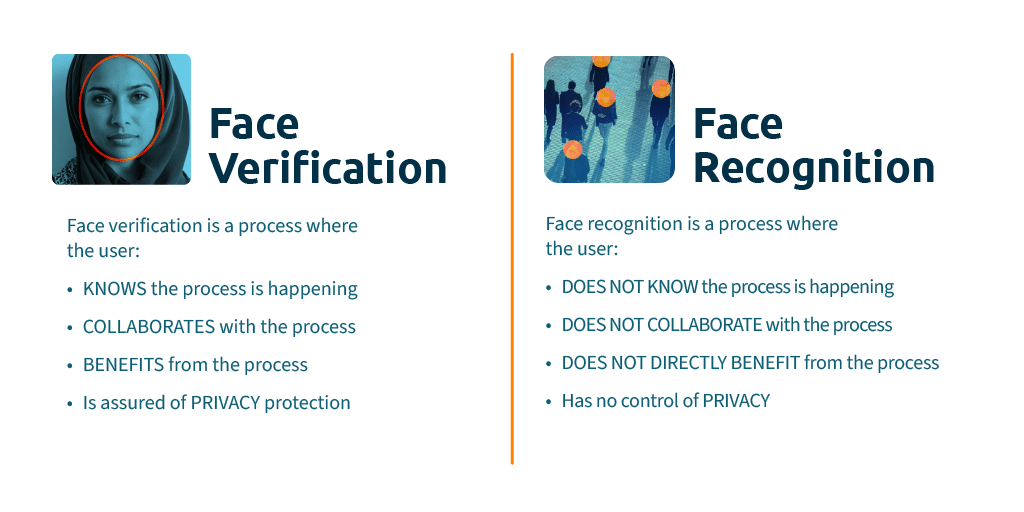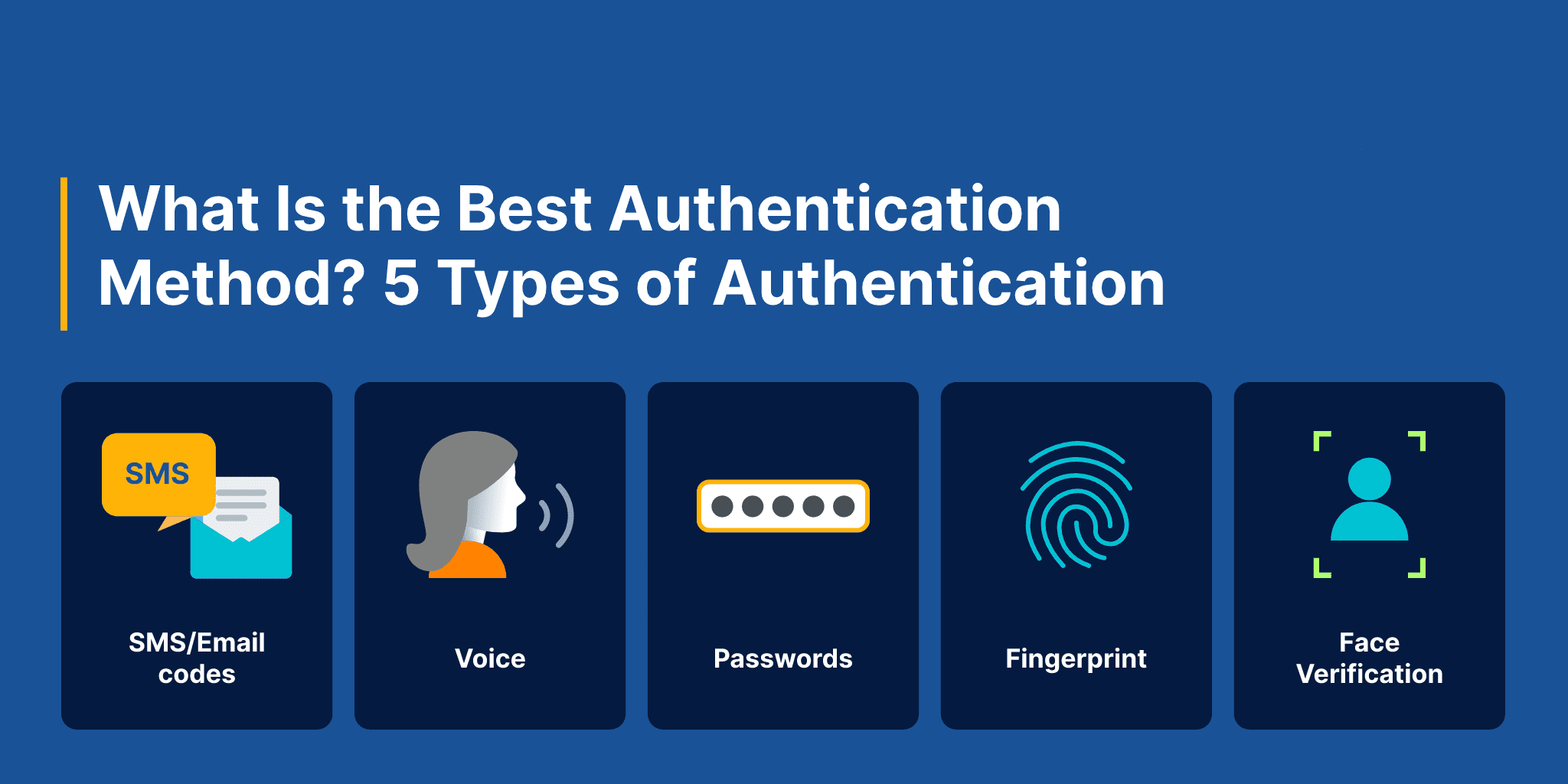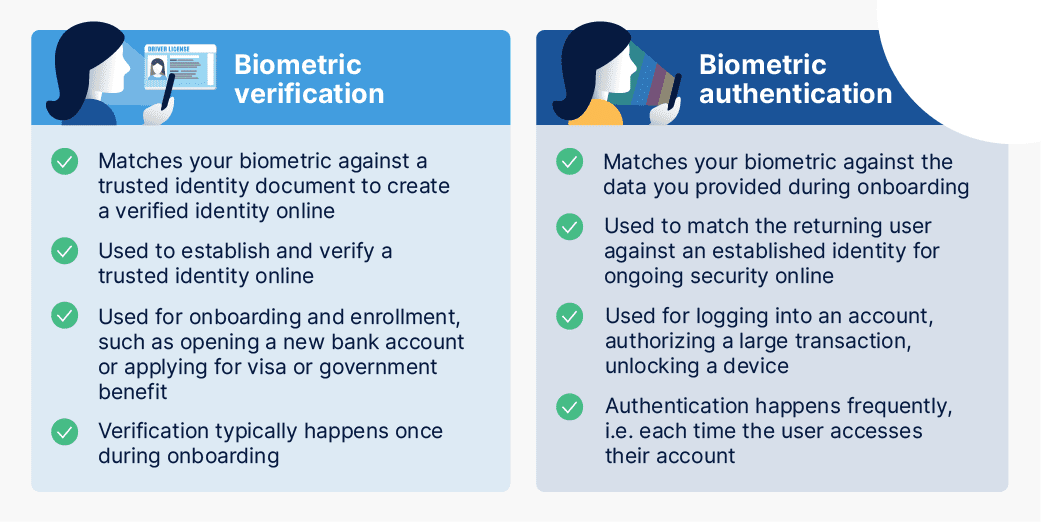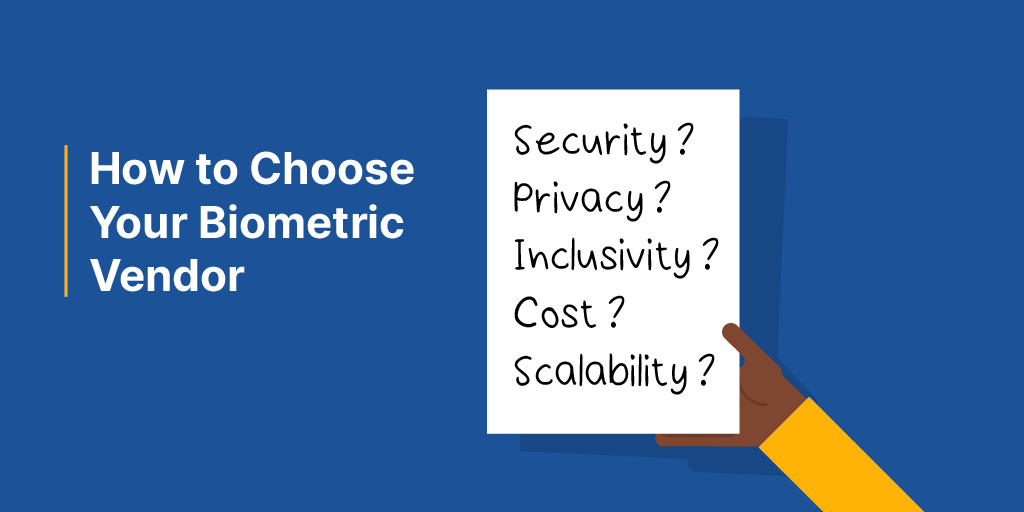August 3, 2022
Scenario 1, face recognition: You’re walking across Times Square, or sitting in your seat at Wembley Stadium. Facial recognition technology, combined with CCTV, is scanning the crowds and matching faces against a database of known or suspected criminals. You do not know if or when face recognition is being carried out on you. You are not able to opt-out of it. There is no direct personal benefit to you from it. You do not know how the images are being used, shared, or stored.
Scenario 2, face verification: You’re sitting at home. You want to apply for a visa for an upcoming vacation. You open your laptop, or pick up your mobile phone, and log on to the government visa service. You use the device camera to scan your driver’s license or passport to prove your identity. You then scan your face. Facial verification technology confirms that your physical face matches the one in the ID document, and that you are real and completing this application right now. You know facial verification is happening. You choose to do it. There is a direct personal benefit to you (you get to go on your vacation). And with iProov’s face verification technology, you know that the images are kept behind a privacy firewall and are subject to strict GDPR rules.
There is also face detection, which is the process of identifying when a human face is present in a video or image, without identifying that person in any way. iProov specifically uses face verification.
Face recognition and face verification are often lumped together and used interchangeably to mean the same thing. But the truth is that the two technologies and the purpose of their use are completely different and need to be considered separately. Questions about the ethics of facial recognition for surveillance, and the call for clarity and limitations on its use, are matters for serious public discussion. However, face verification is not the same thing.
Why Do We Need Face Verification?
Put simply, face verification is needed for your online security.
Traditionally, we have verified our identity by walking into a bank or a government office and handing someone our documentation, which they then confirm matches the physical face that they see in front of them. But how do we transfer that process onto the internet? How do I prove to you that I am who I say I am if I’m sitting on my sofa using a mobile device?
Your face is the most secure way of verifying your identity online, and it’s the only way that businesses and government services can be assured that you and only you have access to your data:
- Knowledge-based security (like passwords) can be shared or stolen and are hard to remember when you need countless secure ones for different accounts.
- Device-based security (like mobile phones or tokens) have to be carried around and can be stolen or lost.
- Other biometric identifiers, such as irises or fingerprints, are not included in driver’s licenses or passports (unlike photographs).
- Only face verification enables you to prove online that you are the bona fide holder of your ID document. iProov online face verification also allows you to assert that you are genuinely present during your facial scan and that your image has not been stolen.
Online crime is growing, both in the number of attacks and in the sophistication of the tactics used by international criminal gangs. We all need a way to secure ourselves against identity and financial theft. Face verification enables us to do this, and iProov face verification allows us to do so with maximum security and simplicity.
When Is Online Face Verification Beneficial? Examples
There are many occasions when we as individuals need to confirm with enterprises, banks, and government services that we exist and that the physical being asserting the identity is the rightful owner of that identity. Here are a few examples of when online face verification makes processes easier, faster and more secure:
Digital Onboarding:
- Banking: opening a bank account
- Other financial services: applying for a credit card or an insurance policy
- Government services: applying for visas, driver’s licenses or passports
- Healthcare: applying to access your health record
- Education: applying to college or to sit an exam
- Work permits: applying to be an Uber driver
- Social networks: setting up an account
Face Authentication:
- Banking: adding new payees or transferring large amounts of money
- Other financial services: making an insurance claim
- Government services: checking visa status, renewing ID documents
- Healthcare: booking appointments
- Education: sitting exams
- Work permits: confirming I am doing the job
- Social networks: commenting or other activities
iProov: Facial Verification, Not Facial Recognition
iProov provides facial verification. Our Dynamic Liveness technology enables users to complete a facial biometric verification and confirm that they are:
- The right person
- A real person
- Verifying right now
A user simply looks at their mobile device or laptop screen. Their face is illuminated by a series of colors. This brief ceremony detects that the user is a real human being and not a photograph or mask. It also assures that they are genuinely present in real-time, and not a deepfake or replay attack. And finally, as a “one-time biometric” it cannot be reused and is therefore secure against being used in a replay or other criminal attacks.
With iProov facial verification the user has:
- Knowledge that the verification is taking place
- Willingly collaborated with the verification
- A direct personal benefit from the verification
- Assurance of privacy
As well as being the most secure way to verify your identity online, iProov is also the easiest to use. We firmly believe that security without usability is worthless. As passwords become more complicated, users simply find workarounds to remember them. Those workarounds, such as writing passwords down or using the same one for multiple accounts, are often not secure. iProov technology requires no effort from the user.
Face verification offers us security, safety, simplicity and privacy in a digital world. It is quite different to face recognition and the two should be treated differently.
For more information on iProov technology, please contact enquiries@iproov.com or visit www.iproov.com



